The Homeowner's Guide To Backyard Beekeeping
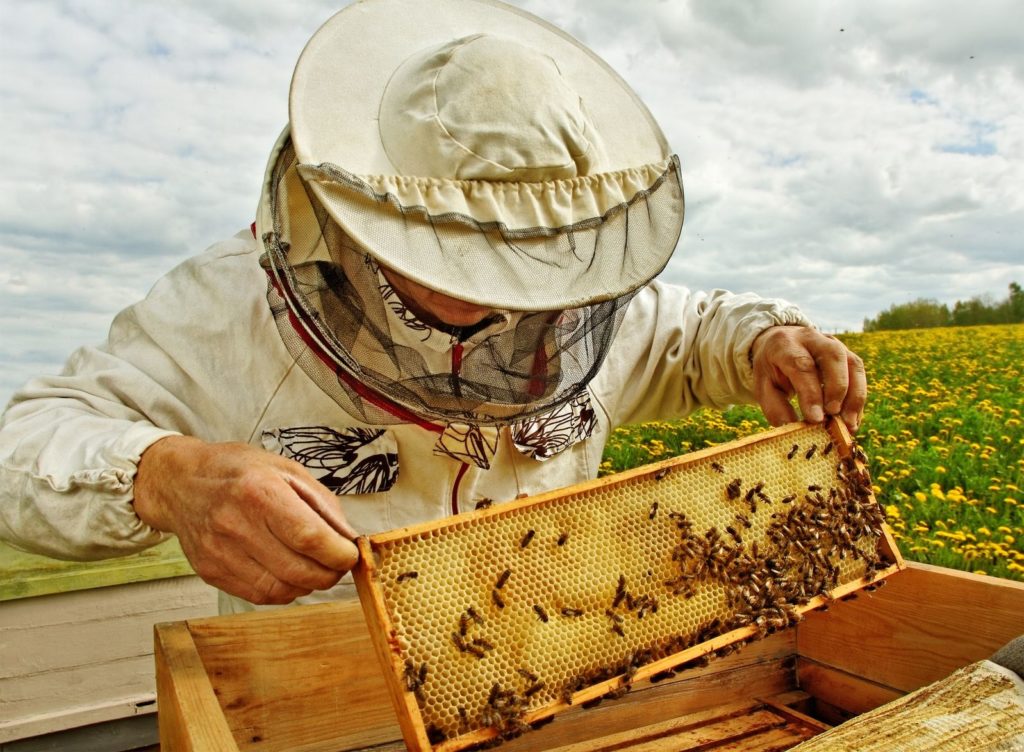
Bees are a recurring topic of interest worldwide as their numbers continue to dwindle.
If you want to learn more about these fascinating insects, make some money, have your own source of delicious honey and preserve the lives of bees, you may want to consider getting into beekeeping. It’s a hobby you can do right in your backyard. Don't forget about how your going to store all your new equipment however, these garage organization ideas can keep your honey production going strong!
Here is everything you need to know about becoming a backyard beekeeper, finding bees and caring for them.
The Backyard Beekeeping Toolkit
While you don’t need to spend years at a university studying bees to get into this hobby, you should educate yourself before buying bees. Tonya Wells at Queen Bri’s Honey, an Oklahoma farmer’s market, recommends signing up for an online course or two, or heading to a nearby apiary to learn from a seasoned pro there.
Betterbee suggests investing in the following tools and equipment after passing those classes:
- Scraper for hive maintenance
- Comb knife for harvesting comb honey
- Nectar detector
- Pail holder for harvested honey
- Spacing tool for measuring distance between honeycombs
- Multi-use hive tool for “removing nails, scraping away debris and paint, as well as prying apart stubborn hive bodies and frames”
- Smoker
- Proper clothing and/or eyewear
Kim Flottum at Popular Mechanics mentions some practical concerns that beekeepers will have to carefully consider:
- Where will you keep your bees?
- Do you have the space? (“A typical sized city lot of about a tenth of an acre or so, even one as large as half an acre, can accommodate one or maybe two colonies,” she says.)
- Will having a collection of bees annoy the neighbors?
- Is your family OK with it?
- Is beekeeping legal in your city or state?
Make sure to get the green light on all of the above before you begin.
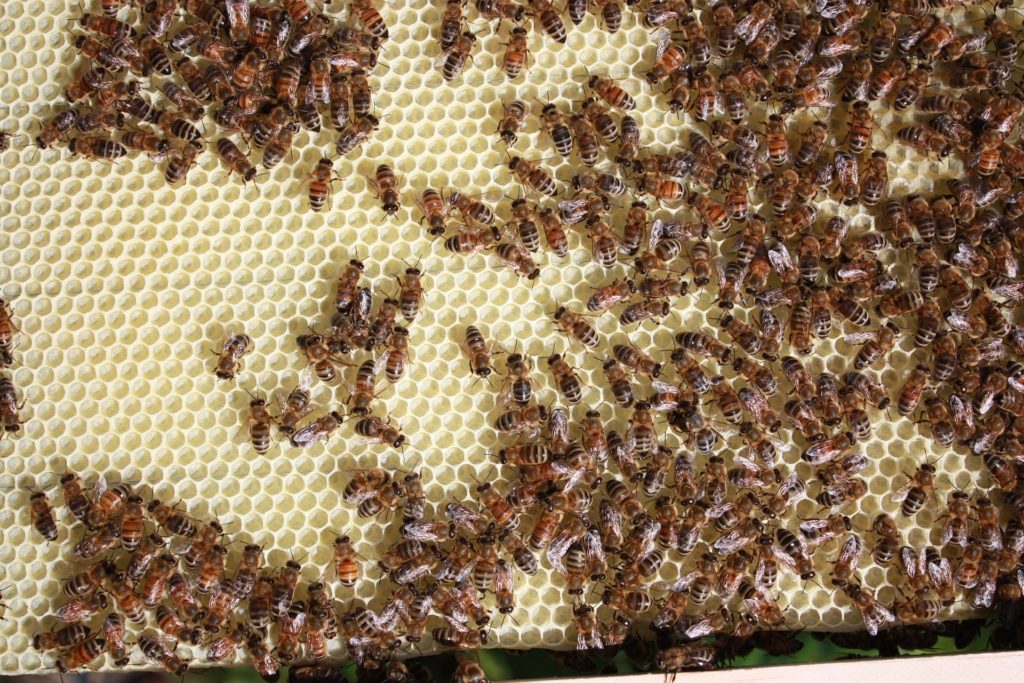
Finding Bees
The most crucial part of the operation is, of course, the bees. While there are many types of bees out there, beekeepers tend to prefer honey bees. MyBeeLine elaborates on the different types:
- German bees — Resistant to freezing weather, German bees aren’t exactly an ideal choice for beginner beekeepers due to their “defensive nature and their susceptibility to many brood diseases.”
- Russian bees — Unlike German bees, Russian bees can handle a mite infestation. However, when it comes to mating, “it has…been observed that mixing them with other bee species decreases their production.”
- Buckfast bees — Another bee from Germany, these insects can be aggressive, but they do make a lot of honey.
- Caucasian bee — Named after their original home on the shores of the Caspian Sea, Caucasian bees are adept at pollinating due to their tongues, which are lengthier than most bees’ tongues.
- Carniolan bee — Found natively throughout southeastern Europe and as far north as Austria, these bees “tend to rapidly increase in population [and are] quite safe to work with.”
- Italian bee — “Their relatives are also known to have survived the last Ice Age,” says MyBeeLine. These Sicilian bees are a popular choice due to their resistance to changing weather (including heat). Michael Bush at Bush Farms says Italian bees are a favorite for United States beekeepers.
Once you know which bees are right for your hive, the next step is finding them.
Depending on where you live, you may have a local beekeeping organization that can help you find bee retailers, such as the Maine State Beekeepers Association or the Philadelphia Beekeepers Guild in Pennsylvania.
Otherwise, try these bee sellers:
- BeeWeaver in Texas
- Gold Star Honeybees in Maine
- Rossman Apiaries, Inc. in Georgia
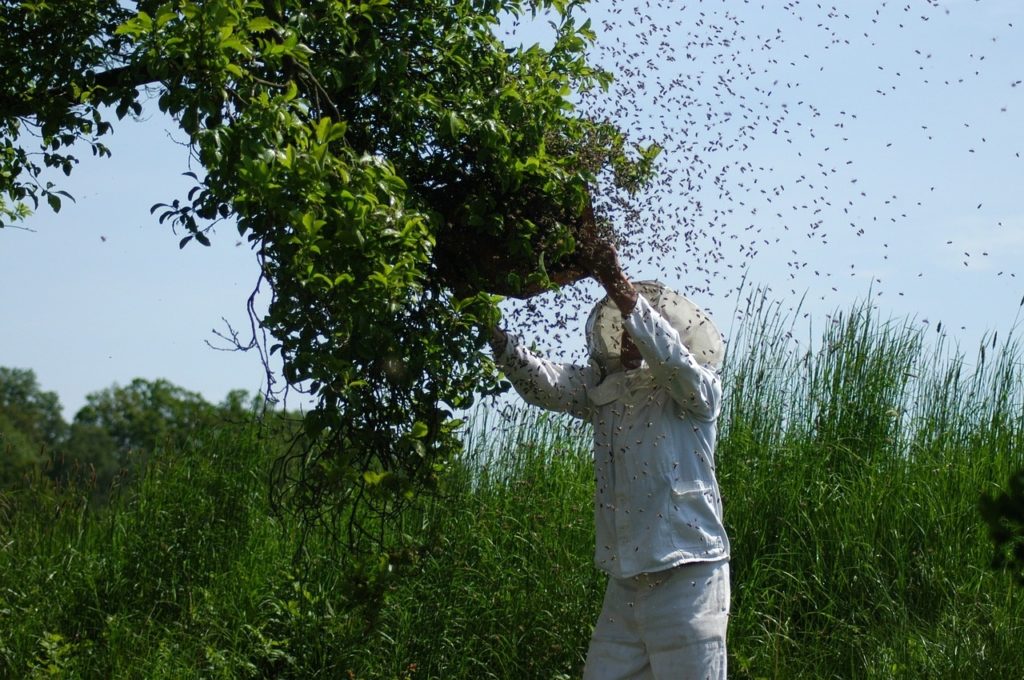
Building Your Bee Habitat
It’s better to have a bee habitat ready before buying bees. No matter how handy you are, you will be able to build a perfectly suitable beehive your new insect friends will feel comfortable in.
Riley E. Carlson at self-sufficiency magazine Pioneer Settler shares some ideas to get beekeepers started. As Carlson demonstrates, your beehive can be a simple thing made of paper tubes, wooden boxes, dead tree stumps or even mason jars. Let your creative side take over when designing your beehive.
Not sure which habitat to choose? The Honeybee Conservancy explains the pros and cons of different manmade beehives. “Large complex hives can accommodate many more bees in the living space,” they say. “Hives also offer human beings an infinite source of learning and entertainment (not to mention honey). However, hive management requires regular upkeep and expense, along with beekeeper training.”
If You’re Feeling Ambitious
Cam Pauli at Modern Farmer has an excellent tutorial for a wooden beehive made with wood screws, a jigsaw, wood glue, nails and a table saw.
If You’re Feeling Creative
Kimberley Mok at TreeHugger turned a tree trunk into a natural home for bees. Her post includes a video with step-by-step instructions. Just make sure to be careful when using a chainsaw. “Sticking a chainsaw in tip first is a good way to have it buck right up in your face,” she writes. “A safer method would be to auger out a few holes to make one large hole into which the chainsaw blade would fit.”
Whatever you choose, beehive placement is key. Kimberley Navabpour and Margaret Sloan at Sunset explain. “Hives should face south, if possible, and they need to be kept off the ground to protect them from dampness and critters,” they write.
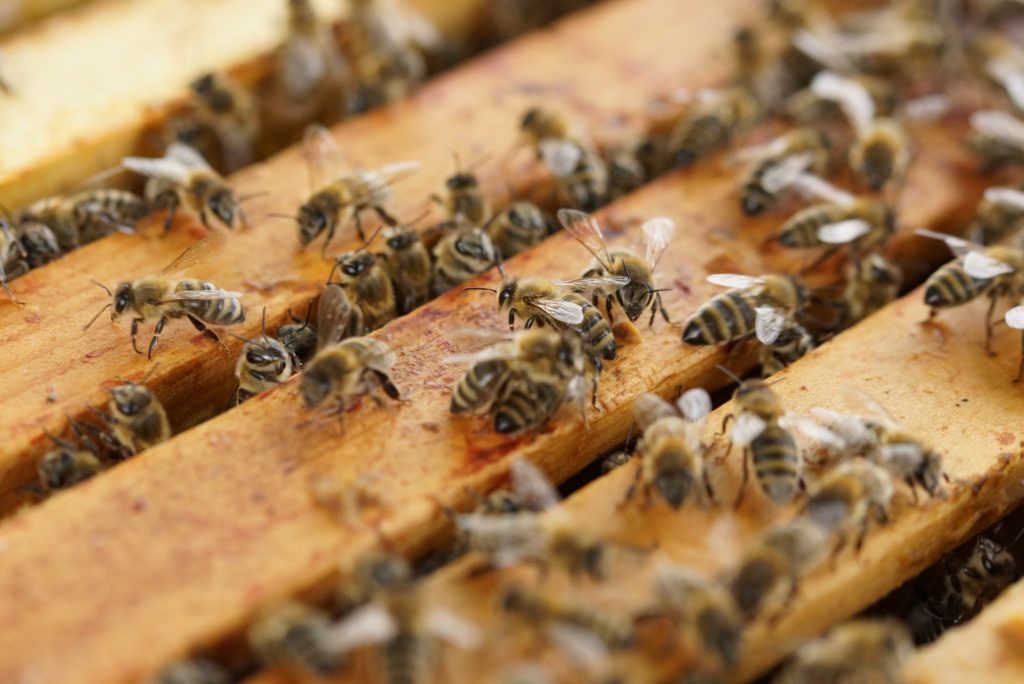
Caring for Your Bees
Once the bees arrive, Alan and Dick at GloryBee say to expect the package to contain thousands of bees, “a few hundred” of which will have already died. This isn’t abnormal. You only have a problem if the queen is dead .
Here’s what the GloryBee team recommends doing upon receiving the shipment of bees:
- Transfer bees to the hive “in the late afternoon, when the weather is moderately cool and the bees will not want to fly.”
- As they acclimate to the hive, spritz the insects using a water and sugar mixture (half of each) to keep them tame.
- Give the queen her own prominent place. She likely came in her own separate box. Alan and Dick have a creative way to introduce her to the hive: “When you take the queen and place her into the hive, be sure to replace the cork in the hole [in the box] with a gummy bear or marshmallow. When your bees get into the hive, they will eat the candy and the queen will be able to get out. This timed release is crucial for a stable introduction and pheromone adjustment to the new colony.”
- The bees’ diet should consist of honey syrup and sugar.
Some bees can handle long winters and hot summers, but not all bees have that ability. Further, bees in America have begun dying in much larger numbers during the summer time, as Bee Informed Partnership found. The organization reports that between 2015 and 2016, almost half the bees (44 percent) owned by American beekeepers died. That’s an odd trend. So, why are bees dying off in such large numbers during the summer?
“The researchers note that many factors are contributing to colony losses,” Bee Informed Partnership said. “A clear culprit is the varroa mite, a lethal parasite that can be easily spread between colonies. Pesticides and malnutrition caused by changing land use patterns are also likely taking a toll, especially among commercial beekeepers.”
Both beginner and expert beekeepers should be aware of this when starting a beehive.
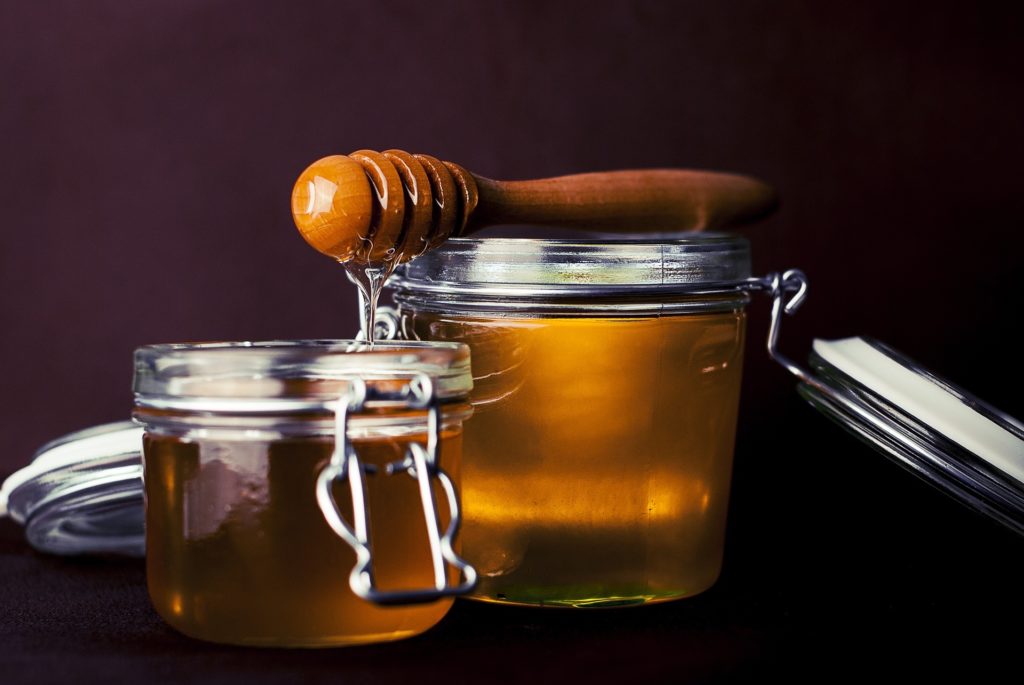
Harvest Season
After caring for bees and keeping their hive clean and free of pests, it’s time to harvest honey. This normally happens in the summer or autumn. However, bees may not always produce enough honey for harvesting after one year of beekeeping, notes The Warre Store, an agriculture retailer in Michigan. If that’s the case, just be patient and wait until next year.
Before harvesting, Stephanie Staton at Hobby Farms insists on having a smoker handy to keep the bees subdued. (If you want to learn all about smokers, Jim Thompson at Bee Culture Magazine wrote about the history of smokers and the various kinds available.) Here’s what else Staton does:
- Take the cover and top off the beehive. “You may need to use a mini-crowbar-style hive tool to pry the inner cover loose, as the bees tend to seal it with propolis, a resin-like mixture that bees collect from tree buds and bark when they pollinate.”
- Some bees may stick around despite the smoking, so make sure to gently nudge them along.
- With a scratcher or uncapping knife, grab the honey.
Once you get the honey, what do you do with it? Kit at DIYdiva explains: “The basic idea is to ‘uncap’ the honeycomb, then put it in an extractor that spins the frames to get the honey out.”
Some extractors require manual work to get the honey (such as the one that Kit used) while others use a heating source. Make sure to place a bucket or basket beneath the extractor to catch the honey. Kit has pictures in her post so beginner beekeepers can get a visual idea of what to do.
Once you’re done extracting the honey, don’t throw out the frames. Instead you can use your garage space to store them. See the best garage organization systems out right now to make the most use of your space! “Since they are [the frames] already drawn out and uncapped, the bees can spend their time filling them with honey instead of building the combs (which is why you get less honey the first year),” she writes.
Your honey is then ready to eat or for storing.
Beekeeping Safety
It goes without saying, but it’s always important to wear protective clothing and other gear when beekeeping. Whether you’re feeding the bees or just checking on them, you’ll want to avoid stings. Hilary Kearney at Beekeeping Like a Girl knows this too well.
“New beekeepers tend to have a slightly idealized concept of what beekeeping will be like,” she writes. “They see videos of experienced beekeepers inspecting their hives with no bee suit on and they think they can do the same. The truth is even seasoned beekeepers get stung when they are not wearing their suit.”
Just in case you need a refresher on which gear to wear, Quarto Knows explains how to measure for properly sized gloves and suits. The writers suggest using elastic straps to prevent bees from sneaking into the suit: “Having these elastic straps that can be wrapped around a wrist or ankle and secured with Velcro is a wise choice. Keep a pair in your back pocket.”
Finally, Hobby Farms also recommends tossing out any beekeeping boxes and other debris hanging around the beehive. “Don’t leave empty hive boxes, old frames or chunks of comb lying around — each of these honey-scented objects has the potential to attract skunks, raccoons and even bears,” the writers explain.
images by:
©ratikova / 123RF Stock Photo, jamesrwilliamson, RPN, maria-anne, fancycrave1
